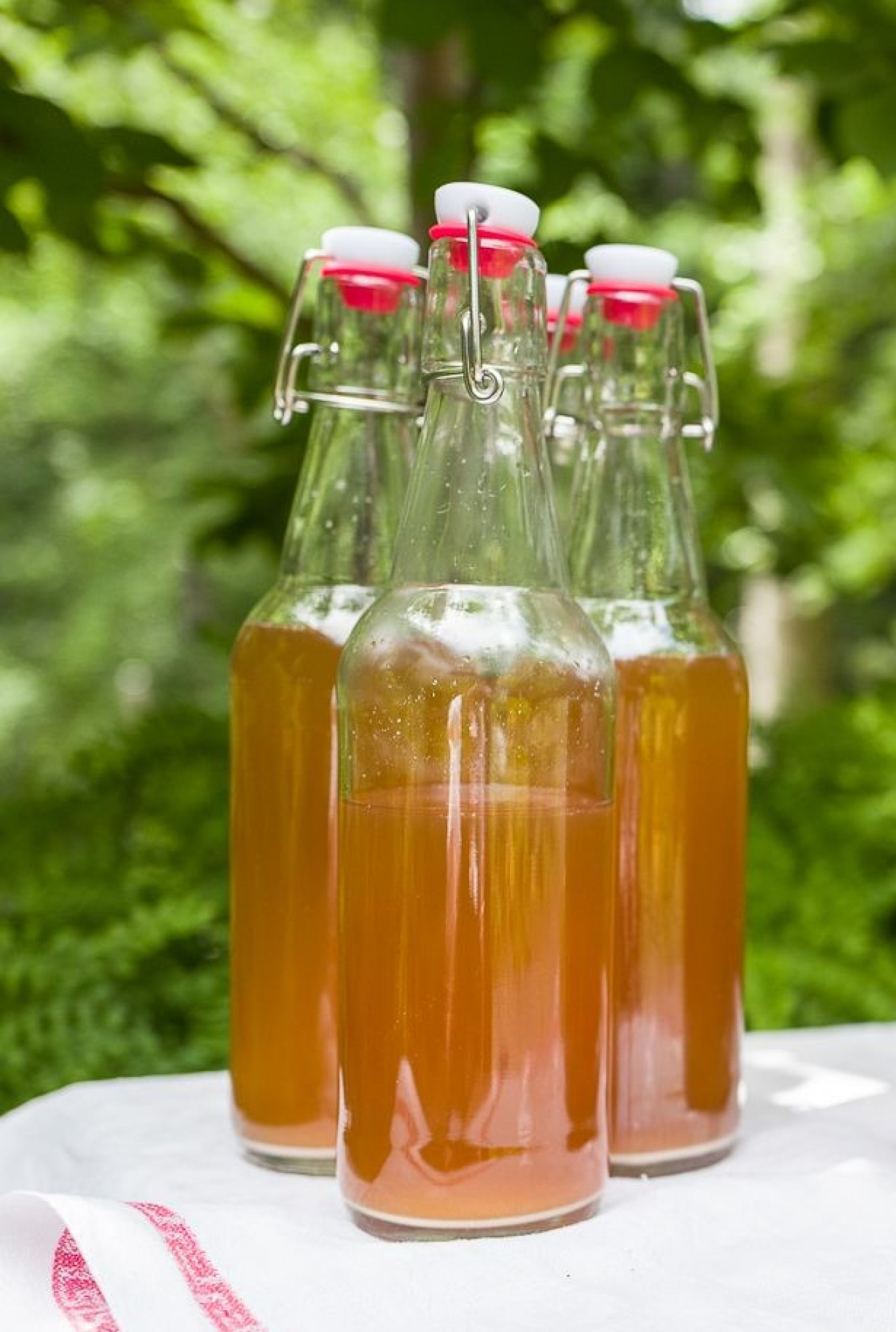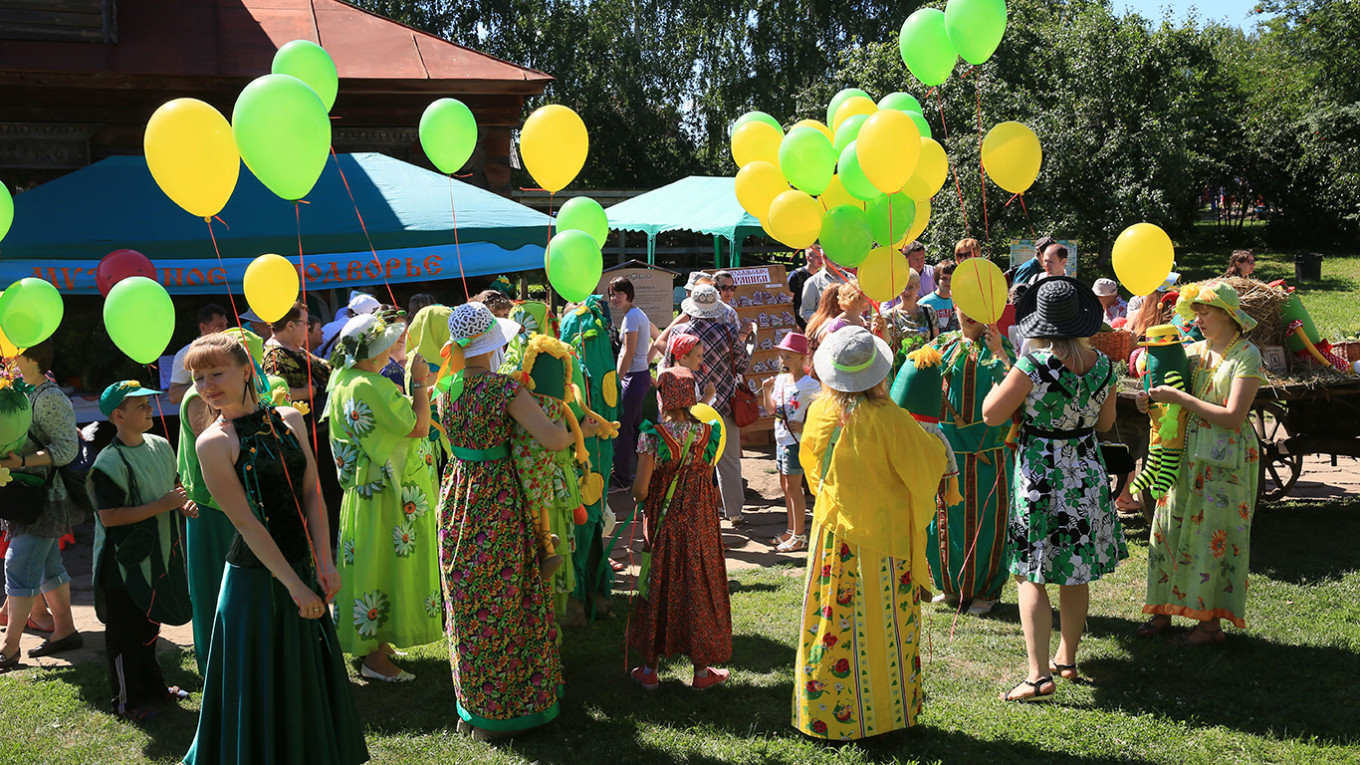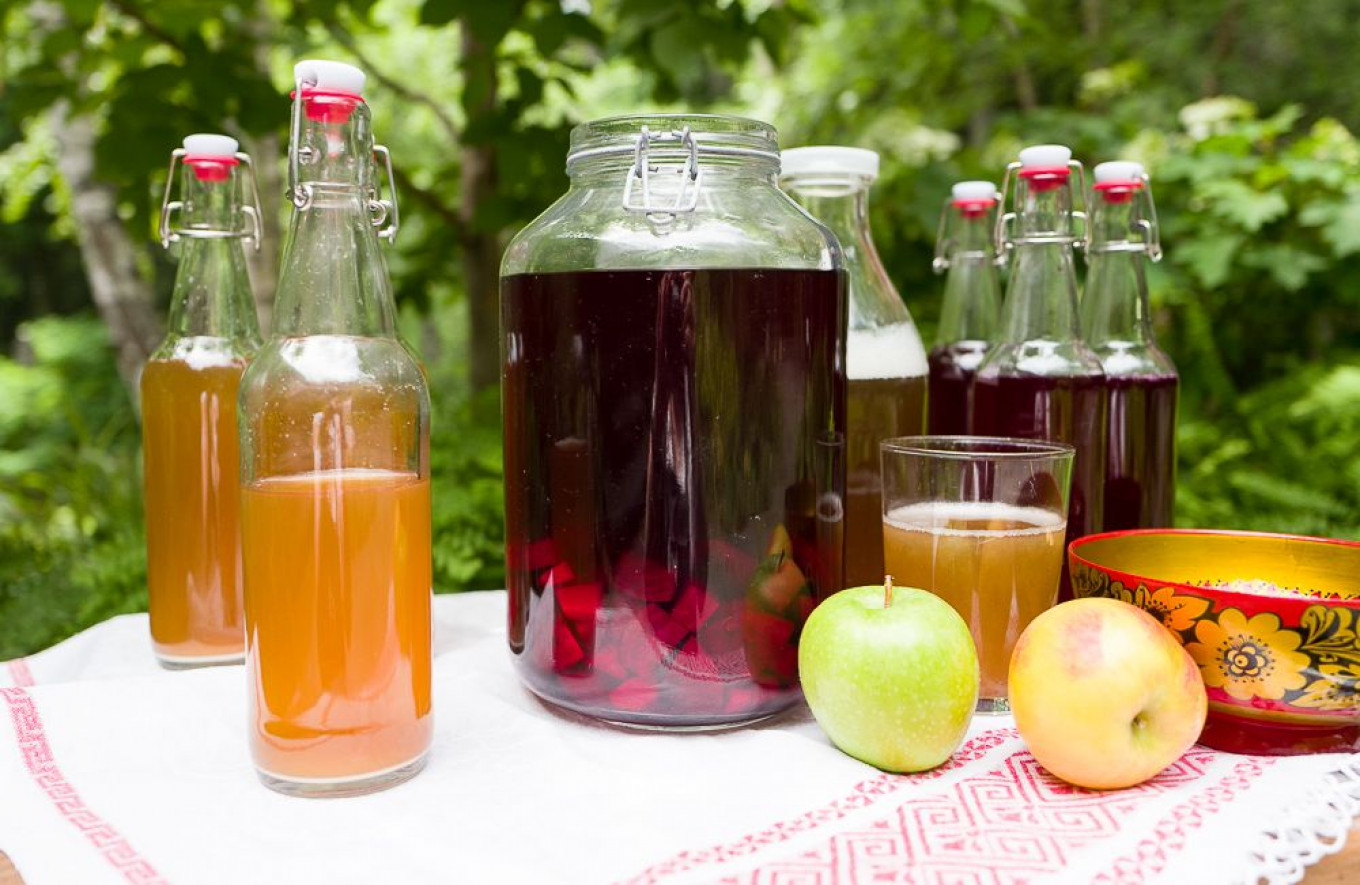If there is one thing worse than Moscow in the middle of a cold snap, it’s Moscow in the middle of a heat wave. Summer took its own sweet time coming this year, but now seems to have settled in for the duration with the relentless baking heat that is so hard to coax off the Eurasian plain.
This is classic kvas weather. Nothing quenches the thirst quite like the slightly tart, faintly nutty taste of this carbonated and mildly alcoholic drink, which some liken (erroneously) to kombucha. Kvas is Russia’s true national drink — pre-dating vodka, which was introduced to Russia by the Poles in the fourteenth century, by at least 500 years.
Kvas is yet another brilliant invention inspired by the Russian aversion to throwing away bread, a phenomenon I wrote about recently. Kvas is “brewed” by combining black and rye rusks with raisins, sugar, yeast, and water and allowing the mixture to ferment for several days. To the uninitiated, I often describe kvas as what might happen if beer and cider had a baby. But this doesn’t do kvas justice; it has a taste that is all its own and nothing — absolutely nothing — tastes as good on a stifling scorching day as a refreshing glass of cold kvas.

High summer arrives in Moscow behind the yellow and red kvas tanks — Russia’s version of the Good Humor Truck — and on sweltering July days, a line of thirsty customers clutching empty 2-liter bottles can snake around the block. I’m old enough to remember the alternative – and quintessentially collective — manner in which kvas was sold in the USSR: from Soviet prototypes of the vending machine, where for a few kopeks, 250 ml of kvas would spout into the communal Vera Mukhina faceted glass tumbler, which, when returned to the machine, received a fleeting spritz of water to clean it for the next customer.
For something that tastes so good, the health benefits of kvas come as a delightful bonus. The natural yeast in kvas provides excellent digestive support and all the accompanying benefits of fermented foods, which today are so popular. Beet kvas, which is a superb addition to any pot of borscht, is also an excellent tonic for the liver. And it certainly wins the soft drink beauty contest, with its vibrant purple hue. Folk belief suggests that kvas promotes fertility, which is why it was always served to brides at weddings. I’ve been told kvas makes an excellent skin tonic, and several Russian friends swear that it cures cancer. With all these miraculous restorative properties, it’s madness not to consume as much kvas as you can.
But beware the source! The worst thing that ever happened to kvas was perestroika. Russians began commercially producing kvas, putting it into plastic bottles and selling it alongside Pepsi and Fanta. For us old school types, the notion that kvas could have a shelf life of double-digit days was — and still is abhorrent. Kvas should be brewed at home with no additives or preservatives; ideally in an idyllic dacha by a wizened babushka. Or, interestingly, at an Orthodox monastery where the kvas is sinfully good. Kvas should also be consumed as soon as it is ready — and cold enough. This is the one beverage Russian’s insist on drinking well chilled.

I first learned how to make kvas at a Master Class at the annual Suzdal Cucumber Festival, where kvas is (sensibly) the strongest drink on offer during the long, hot, midsummer day. They take their kvas very seriously in Suzdal, but they also unfetter completely their creativity, and thus it was the perfect place to learn the base recipe, and how to play with it by the addition of herbs, berries, spices, and flavorings as diverse as star anise to black pepper. American brewer Dan Woodske, author of the authoritative “Kvas History, Health Benefits, and Recipes for the Russian Bread Drink” uses the pariah Christmas fruitcake to make kvas, which I certainly plan to try in December, and Krispy Kreme doughnuts, which I may give a miss.
Having recently mastered the sourdough starter, I have now created the ideal virtual cycle of enough surplus bread supply to meet the considerable kvas demand in my household. I’ve had fun experimenting during the long months of lockdown — I now refer to the laundry room as “the fermentation station,” where some kind of kvas is bubbling away most days. I encourage you to join the party! And don’t let the word “ferment” scare you: this is a low tech set up, despite what a bearded hipster may tell you. All you need is a large wide-mouth jar, basic pantry staples, sturdy swing-top bottles, cheesecloth or a coffee filter and a strainer.*
Let’s get brewing!

Ginger Honey Kvas
Ingredients
- 1 standard loaf of rye, pumpernickel, or black bread (about 750 grams) cut into cubes. (Choose a robust-flavored loaf; bland bread makes bland kvas.)
- 3 quarts (3 liters) boiling water and 3 Tbsp of warm water
- 1 package (2¼ tsp or 7 grams) of yeast (distillers or baking)
- 1 thumb of ginger, peeled and sliced
- ½ cup (125 ml) honey
- 1 ½ cup (350 ml) raisins
Instructions
- Preheat the oven to 350ºF (180ºC). Arrange the bread cubes on a sheet pan and bake for 30-50 minutes until they are hard. If your bread is already stale, then bake it for about 20 minutes.
- Bring the water to a rolling boil in a large and very-well scrubbed soup pot with a tight lid. Add the baked bread cubes, ginger, and half of the raisins and stir to combine. Cover and set aside for at least 5 hours: the longer you leave the bread mixture to steep, the more intense the flavor will become.
- Set a colander lined with 3 layers of cheesecloth or a coffee filter over a clean bowl or pot. Strain the bread mixture through the cheesecloth. Discard the solids. Purists often filter the mixture through another 3-4 layers of cheesecloth, and if you want a clear brew, this is a good extra step.
- Sterilize a large, wide-mouth glass jar in the dishwasher or by rinsing it with boiling water.
- Add the strained liquid to the glass jar with the honey and remaining raisins. Stir to combine.
- Dissolve the yeast in the warm water and add the mixture to the jar. Cover the mouth of the jar with 3-4 layers of cheesecloth and secure with string or a rubber band.*
- Set the jar aside in a dark place and keep an eye on it. The yeast will begin to work in a few hours and you will see foam develop on the surface. Let the mixture sit for 4-5 days.
- Sterilize your swing-top bottles, taking care that the silicon gaskets are neither broken nor chipped. Fill the bottles three quarters of the way full, leaving sufficient room for the carbonation to develop. If you wish, add a few raisins to each bottle. Seal the bottles and set them aside for 3-5 days at room temperature. Then chill for at least 12 hours before consuming.
Beet Kvas

This version of Beet Kvas is the one I use in borscht, and as part of the dressing for roasted beet salads. Add sour cream and buttermilk for a fantastic salad dressing. The flavor is very strong and not overly sweet: an acquired taste, but highly beneficial if taken as a tonic. Cut it with tonic water, fizzy lemonade, or seltzer for a lovely jewel-toned spritzer.
Ingredients
- 3 quarts liters (3 quarts) water and 3 Tbsp of warm water
- 2 large beets, scrubbed but not peeled
- Leaves and stems of the beets (if you have them)
- 1 knob of ginger, roughly chopped
- 2 Tbsp Nepalese salt or any salt that isn’t iodized
- 3 Tbsp (45 ml) caraway seeds
- 1 package of yeast (2-¼ tsp or 7 grams, distillers or baking)
- ½ cup (125 ml) sugar or pomegranate molasses
Instructions
- Boil the water in a well-scrubbed pot with a tight lid.
- Scrub the beets well but leave the skin on to encourage the fermentation.
- Add the chopped beets, their stems and greens if you have them, the chopped ginger, salt, and caraway seeds to the boiling water. Set aside for 5-6 hours to steep.
- Set a colander lined with 3 layers of cheesecloth over a large bowl. Strain the liquid. Reserve the beets for another use (they are marvelous in borscht!)
- Sterilize a large, wide-mouth glass jar in the dishwasher or by pouring boiling water inside. Add the strained liquid to the jar with the sugar.
- Dissolve the yeast into the warm water, then add to the jar. Cover the mouth of the jar with 3-4 layers of cheesecloth and secure with string or a rubber band.* Place in a dark place for 3-5 days, or until the foam subsides from the surface.
- Sterilize your swing-top bottles, taking care that the silicon gasket is neither broken nor chipped. Fill the bottles three quarters of the way full, leaving sufficient room for the carbonation to develop. Seal the bottles and set them aside for 5-6 days at room temperature. Then chill for at least 12 hours before consuming.
*This is an “open fermentation” method, which I recommend here as it is the easiest for the home cook to replicate. If you have a fermentation bucket with an airlock, by all means, do use that. Whatever you do, DO NOT put your kvas in a normal jar with a lid or vacuum seal. The carbon dioxide inside will build up too much pressure and can cause an explosion of spectacular proportions.






